1900-09
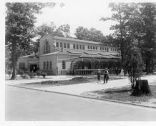
1900
Toledo Zoo
(Toledo, Ohio, USA) The Toledo Zoo began in 1900, when a woodchuck was donated by Carl Hillebrand to Peter Mettler and the Walbridge Park. By the end of its first year, the Toledo Zoo had a collection of 39 animals, most of which were donated. The park was unprepared for these donations and was forced to use temporary housing such as ravines and boxes for exhibits.

26th April 1901
Mykolaiv Zoo
(Mykolaiv, Ukraine) Mayor Mykola Leontovych founded his own private animal collection and opened it to the public in Leontovych's house on Admiralska Street (on the site of the current Regional Executive Committee).

23rd May 1901
Zoo Halle
(Halle, Saxony-Anhalt, Germany) In 1891, Captain Otto Nagel built the Reilsburg restaurant on Seebenerstrasse, which today houses the Luchs cinema and, many years before that, the zoo restaurant. After Nagel's death in 1897, his widow offered the Reilsberg for sale to the real estate dealer Eduard Keerl. He suggested the Halle zoology lecturer Dr. G. Brandes then proposed building a zoo on the Reilsberg. Keerl bought additional surrounding properties and on May 23, 1901, the Halle Zoological Garden opened its doors for the first time with 196 animals in 94 species.
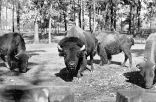
1902
Potawatomi Zoo
(South Bend, Indiana, USA) South Bend’s first zoo, the South Bend Zoo, began as a modest duck pond in Leeper Park in 1902
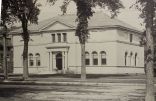
1903
The Berkshire Museum
(Pittsfield, Massachusetts, USA) In 1903, Berkshire Museum founder Zenas Crane, inspired by such institutions as the American Museum of Natural History, the Smithsonian, and the Metropolitan Museum of Art, decided to blend the best attributes of these establishments in a new museum for the people of Western Massachusetts. Thanks in large part to Crane’s efforts, the broad and varied collections of Berkshire Museum include objects from virtually every continent, from important fine art and sculpture to natural science specimens and ancient artifacts. As the third-generation owner of Crane & Company, a paper manufacturer that was (and continues to be) the official supplier of paper to the U.S. Treasury, Crane invested his wealth in his community. He actively sought out art and artifacts for Berkshire Museum, and encouraged the development of collections that would bring home to the Berkshires a wide cross-section of the world’s wonders. Berkshire Museum became a “window on the world.”

1903
Birch Aquarium
(La Jolla, California, USA) The aquarium was established in 1903 after the Marine Biological Association of San Diego was created to conduct marine research in the local waters of the Pacific Ocean (its name was later changed to Scripps Institution of Oceanography to honor supporters Ellen Browning Scripps and E.W. Scripps, part of the Scripps family of newspaper pioneers). The founders built and maintained a small public aquarium and museum to communicate their discoveries to the world.
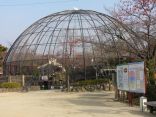
1st April 1903
Kyoto Zoo
(Kyoto Zoo, Kinki, Japan) The Kyoto Municipal Zoo was opened to the public on 1 April 1903 with 238 animals representing 61 species. The total area of the zoo was 3.4 hectares (8.4 acres), and the zoo had 6,591 visitors on its first day of operation.It is Japans first zoo to be established by contributions by the public
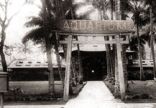
19th March 1904
Waikiki Aquarium
(Honolulu Aquarium, Hawaii, USA) Then known as the Honolulu Aquarium, it was established as a commercial venture by the Honolulu Rapid Transit and Land Company, who wished to “show the world the riches of Hawaii’s reefs.” As directors of the transit company, Charles M. Cooke gave a gift of $8,000 for the Aquarium’s construction, and James B. Castle contributed the lease for the building site. They also had a practical objective in using the Aquarium as a means of enticing passengers to ride to the end of the new trolley line in Kapi‘olani Park, where the Aquarium was located. The Aquarium opened with 35 tanks and 400 marine organisms, and during its first year, the internationally renowned biologist David Starr Jordan proclaimed it as having the finest collection of fishes in the world. Considered state-of-the-art at that time, the Aquarium also received positive comments from such notable visitors of that era as William Jennings Bryan and Jack London.
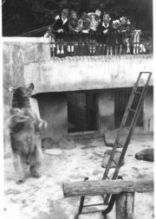
24th July 1904
Zoo Landau
(Landau Zoo, Rhineland-Palentine, Germany) On July 24, 1904, the "Vogelfreund" association took over today's zoo grounds along the historic French fort complex. The association built its first bird house and set up smaller animal enclosures.
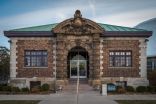
18th August 1904
Belle Isle Aquarium
(Detroit Aquarium, Michigan, USA) First opened on August 18, 1904, the Belle Isle Aquarium is the oldest public aquarium in the continental United States and, at the time of its opening, the third largest in the world. A carving of Neptune, the Roman god of the sea, greets visitors above the entryway, inviting guests into the long, domed-ceiling structure that houses over 50 tanks of fresh and salt-water aquatic life. The aquarium was designed by architect Albert Kahn. Glass sea-green tiles line its walls and ceiling to give it an “underwater” feeling. According to the Belle Isle Conservancy, Kahn intended for the fish to be like art hanging on the wall in a gallery

1904
Aquazoo und Löbbecke-Museum
(Düsseldorf, North Rhine-Westphalia, Germany) The Aquazoo Löbbecke Museum has two roots. The museum part goes back to the private museum of the pharmacist Theodor Löbbecke. His collection became municipal property shortly after his death in 1901, but only on the condition that the city of Düsseldorf exhibited the exhibits in a museum. In 1904 it was opened under the name Löbbecke Museum in Düsseldorf's old town. The tradition of keeping zoo animals goes back to the Düsseldorf Zoo, which was founded in 1876 by the animal protection association “Fauna”. In 1930 the Löbbecke Museum was integrated into the zoo. The zoo closed 1943.

1904
Johannesburg Zoo
(Johannesburg, South Africa) The zoo was built 1904. Sir Percy Fitzpatrick would donate the first animals to the zoo, his own small private collection of African wildlife and would continue to source animals for the zoo until 1912. The zoo's first enclosures housed two lions and a leopard.
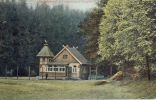
1904
Zoo Liberec
(Liberec, Czech Republic) The first step towards the establishment of the future zoo was the activity of the then Ornithological Association for Northern Bohemia (Ornithologischer Verein für Nordböhmen). Its members first founded a Geflügelpark (a kind of bird corner) on July 2, 1895 , and later also an aviary in the city park open to the public ( 1904 ). Another extension of this area was the planting of swans on the nearby Lake and the establishment of an enclosure for roe deer in the nearby meadow. The center of the area became a wooden house in the Tyrolean style, called the Sparrow's Nest, brought here by the builder Alfred Hübner from the German-Czech Exhibition of 1907 . Around it, the area gradually grew until it was thought about turning it into a small zoo.

1904
Oklahoma City Zoo
The zoo originally opened in Oklahoma City in 1904 (before statehood) in Wheeler Park. The first animal acquired was a deer fawn
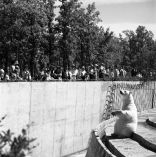
1904
Assiniboine Park Zoo
(Winnipeg, Canada) In 1904, the City of Winnipeg Parks Board purchased some native animals including deer, bison, and elk to start a zoo.
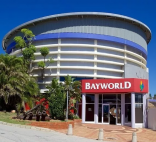
1906 (1865)
Bayworld
(Port Elizabeth, South Africa) Opening its doors 1865 makes it the third oldest museum in South Africa. 1906 some live snakes where added to the collection.
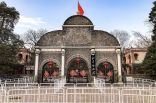
1906
Beijing Zoo
(Beijing, Beijing, China) The zoo grounds originally housed an imperial manor during the Ming dynasty, that became part of the estate of the general Fuk'anggan during the Qing dynasty. In 1906, the Imperial Ministry for Agricultural, Industry and Commerce established an experimental farm outside of Xizhimen on land that encompassed two gardens, the Leshan and Ji, and two temples, the Guangshan and Huining. The Experimental Farm consisted of an experimental farm, a botantical garden, a small menagerie of 1.5 hectares (3.7 acres). The experimental farm had five main experimental areas for grain, sericulture, vegetables, fruits and flowers. The menagerie was the earliest public zoo in China and the oldest public park in northern China.
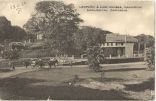
25th January 1906
Yangon Zoo
(Yangon, Myanmar) The zoo was built between 1901-06 and named the Victoria Memorial Park and Zoological Gardens after Queen Victoria of England
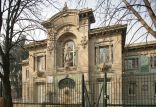
28th April 1906
Acquario Civico di Milano
(Milano, Italy) The history of the Milanese Civic Aquarium began in 1906 when a major International Exhibition was held in Milan to celebrate the opening of the Simplon Tunnel. Built to a design by the architect Sebastiano Locati and financed by Duke Giuseppe Crivelli Serbelloni, president of the Lombard Society for Fishing and Aquaculture, the Civic Aquarium of Milan was inaugurated on 28 April 1906, and is considered one of the most valuable and significant buildings of the Milanese Art Nouveau.

7th May 1907
Tierpark Hagenbeck
(Hamburg, Germany) In the 1890s Carl Hagenbeck created his first "panorama" exhibit and patented the idea in 1896. The display was the "Northern Panorama", the foreground featured seals and walruses in a pool. Hidden from the zoo's patrons was a moat behind the pool. Beyond the moat were reindeer, and beyond a second hidden moat were polar bears. By hiding the moats, the animals appeared to be together in one landscape. In 1907, Hagenbeck constructed a new facility outside of Hamburg which he called Tierpark Hagenbeck which is still the location of the facility today. Hagenbeck sought to design the entire zoo with his panorama system. He also sought to demonstrate that animals from warmer climates did not need to live in expensive, humid, foreboding buildings. Instead, Hagenbeck again sought to make his displays realistic.Using data that he had compiled running his circus, Hagenbeck had estimates of how high and far different animals could leap. Using this data, he built moats filled with water or an empty pit that he determined the animals could not cross. Using moats to separate animals that did not swim, one could look across an expanse of the zoo and see many animals at once, as if in the wild. Previously, zoos had not grouped animals by species, but Hagenbeck revolutionized the layout of zoos, grouping his animals by species.
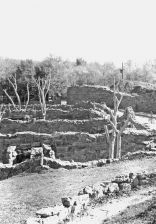
1908
Pueblo Zoo
(Pueblo, Colorado, USA) What is now the Pueblo Zoo was created in the wake of a visit to Pueblo in 1905 by Carl Hagenbeck of the Hagenbeck Shows. He was looking to establish a zoo in the Rocky Mountain region. That bought him to town. The zoo was not established centrally based on Hagenbeck’s ideas. Instead, it was three separate collections of mostly local animals at the three parks. The Pueblo Chieftain first reported on the animals at Mineral Palace Park in 1908. In 1920, the three parks with animals consolidated at City Park. The historical district, that is the Animal House, the Tropical Bird House, Monkey Island, Monkey Mountain and the Bear Pit, opened 1934. By some seen as the opening year of the Zoo
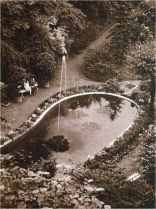
1908
Zoo Ústí nad Labem
(Usti nad Labem, Czech Republic) The forerunner of the current zoo was a private bird reserve founded under the name "Lumpepark" by Heinrich Lumpe ( 1859 – 1936 ) , an entrepreneur and ironmonger from Ústí . In 1908 , this renowned amateur ornithologist bought 3.5 hectares of land from the municipality in the area of the former brickyard on the south-eastern slope of Mariánská skály and founded a bird protection park there. He consulted his plans with experts, such as Jiří Janda , who founded the Prague Zoo in 1930 , naturalist Josef Kořenskýor landscape architect Rudolf Jenatský . Infrastructure (waterworks, roads and bridges, fountains , fencing) was built and trees, shrubs and flowers were planted.
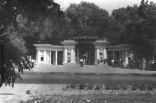
21st March 1909
Kyiv Zoo
(Kyiv, Ukraine) The Kyiv Zoo was founded in 1909 by the Nature Lovers Society and was financed by various private donations. During its first years in business, the zoo experienced some hardships and therefore, did not contain many animals, just 17 different types. During the first winter the zoo was opened, the animals had to be kept in the food storage of the main Kyiv railway station, as the zoo's founders had not found a suitable shelter to keep the animals in during cold weather. Eventually, the shelter was found in the Kyiv Botanical Garden.

1st October 1909
Tiergarten Bernburg
(Bernburg, Saxony-Anhalt, Germany) The city of Bernburg got in October 1909 some pheasants from Tierpark Köthen
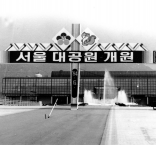
1st November 1909
Seoul Grand Park Zoo
(Seoul Grand Park Zoo, South Korea) The Seoul Zoo was created in November 1, 1909 by the Japanese, in the former royal palace of Changgyeonggung, which was under the changed name of Changgyeongwon or Changgyeong Park. The zoo opened in November 1909 with Siberian tigers, kangaroos, ostriches, camels, orangutans, and other animals. The Japanese also built a botanical garden, and museum on the site.
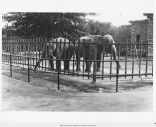
13th December 1909
Kansas City Zoo
(Kansas City Zoo, Missouri, USA) In 1907, a dream began. City activists declared “An idea to create the largest zoological garden in the United States. There will be nothing better in the world. Swope Park is an admirable site for this purpose…” An affluent real estate speculator, Thomas Swope, donated land to Kansas City in 1896 for the park. Barron Fradenburg, a wealthy businessman and leading member of the Chamber of Commerce, made a plea that “Kansas City cannot be a metropolitan without a zoological garden.” Thus, a Zoological Society was formed. 1909, the Kansas City Zoological Gardens officially opened with four lions, three monkeys, a wolf, a fox, a coyote, a badger, a lynx, an eagle and other birds.
woaqzo@yahoo.com